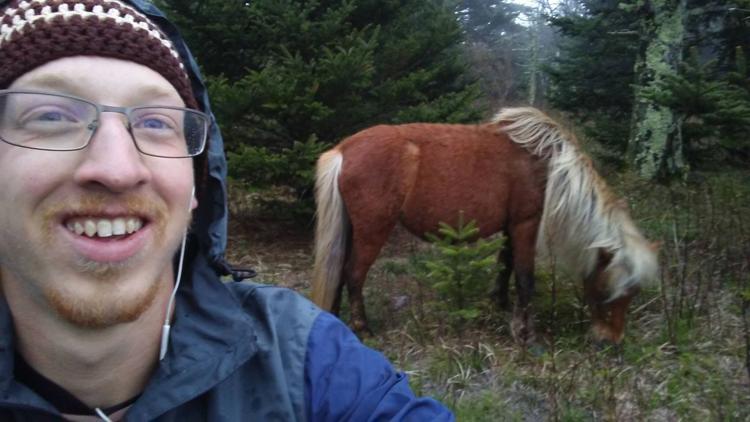By Will Wright

McAfee Knob in Virginia, Mount Katahdin, Maine, and the Grayson Highlands of Virginia are three of the multiple landmarks Wright encountered along the Appalachian Trail.
The driveway that leads from Route 15 to Riverside Park in Whitesburg is easy to miss.
It peels off from the main road and leads down to a gravel parking lot cozied up along the bank of the North Fork Kentucky River.
On a Sunday afternoon last fall, Patty Amburgey stood here and thought about her husband.
His name is one of dozens etched on a black memorial stone erected in October to honor coal miners who worked in the surrounding mountains and died of black lung disease.
Like many other widows in Eastern Kentucky, Amburgey spent the last years of her husband’s life caring for him as the disease took its toll.
Crawford Lee Amburgey died at the age of 65. By the time he died, he had gone blind, his arms and legs had turned black due to poor circulation, and his breath was impossible to catch.
“Until you watch someone die like that, no one could really understand it,” Amburgey said. “That is black lung. That’s the story of black lung. The (phrase), ‘black lung kills,’ it does. It kills the soul of the miner and their loved one.”
The stories of black lung victims, and of the family members who cared for them, have been written about for years by reporters at local and national outlets.
Articles quote sources, including federal agencies, that acknowledge a dramatic spike in the prevalence of black lung in recent years, particularly in Central Appalachia. Miners are now more likely to get the disease than they have been in decades.
But if you ask many people outside the region, or outside other coal-producing states, many people won’t know what you’re talking about.
Black lung is often thought to be a thing of the past, of some far-off era when people still lived in company-owned houses and paid for groceries in company script.
The more time you spend in Eastern Kentucky, the more you’ll realize that those kinds of stories are everywhere — stories of people who are either misunderstood or not understood at all.
While some of those stories are heartbreaking, others are hopeful, inspiring, or, at the very least, worthy of attention.
Not far from the black lung memorial at Riverside Park, Letcher County resident Seth Long has turned his back yard into a small farm that utilizes eco-friendly techniques designed to preserve the quality of his soil.
From a shed near one of his vegetable plots, he runs hoses up the mountain to collect sap from maple trees and turns it into some of the best syrup money can buy.
When people think of Eastern Kentucky, high-quality maple syrup isn’t the first thing that comes to mind. He hopes to change that.
If a group of tourists were to visit Prestonsburg, in Floyd County, they may run into John Rosenberg, a Holocaust survivor and attorney who helped lead a campaign to outlaw broad form deeds, a legal framework that allowed coal companies to acquire mineral rights without the consent of landowners.
Rosenberg went on to found a non-profit law firm that has since provided free services to thousands of people fighting for housing, social services and freedom from domestic violence.
Those tourists could then drive southeast to Elkhorn City and hike along the Pine Mountain Trail, not far from where Daniel Boone took his first steps in the Kentucky wilderness about 250 years ago.
From the ridge, they can look west over the mountains and enjoy the best sunset in Pike County.
The theme of the 43rd Annual Appalachian Studies Conference is “Appalachian Understories,” of which there are many.
Attendees will hear stories of some of the region’s most-underrepresented groups, including black and gay Appalachians who are too often left out of the history entirely.
Stories like theirs will hopefully encourage attendees to make the drive down the Mountain Parkway, past the Red River Gorge, and into counties that are worthy of exploration.
As a student at UK, I don’t think I ever made that trip. I went to the Gorge, to Morehead, to Berea, but left so much of the state untouched.
Now, living near Pikeville, I sometimes feel like I’m making up for lost time.
As the conference ends, I hope some students will make plans to see the Kentucky Coal Museum in Harlan County, or see a concert at the Mountain Arts Center in Prestonsburg, or take a hike along Pine Mountain and watch the sunset.
You will not regret it.
Will Wright reports on Eastern Kentucky for the Lexington-Herald Leader as a Report for America Fellow. He will begin as a fellow for The New York Times in June. He was editor-in-chief of the Kentucky Kernel in 2015-16.
